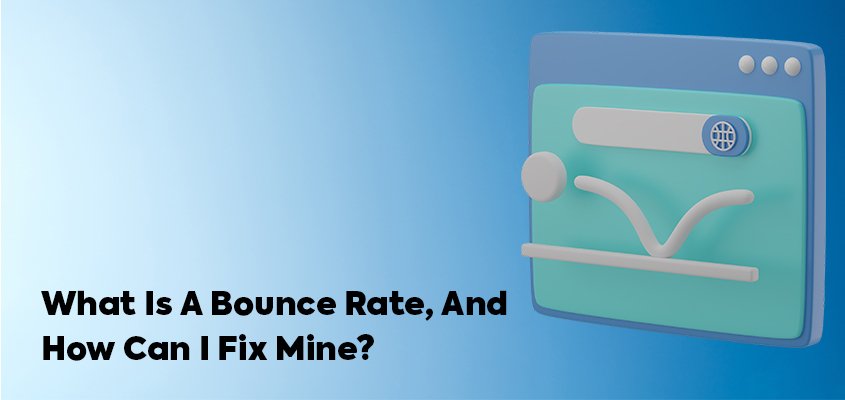When you first come across the bounce rate metric, it can be difficult to understand. You start to wonder whether a bounce rate close to 100% is good or bad. Is it similar to a bounced email? Is this a meaningless metric that I should ignore? And what should I do if I want to fix the problem?
These are some of the questions that many marketers have asked but may not have received a satisfactory answer. But don’t worry. As a leading digital marketing agency, we help you better understand what makes a bounce rate, what doesn’t, and how to fix the problem.
What is a bounce rate?
![]()
When a user visits a single page on your website and does nothing before leaving, it is called a bounce. More specifically, a website’s bounce rate measures the number of visitors who leave a page without taking any action, such as: B. make a purchase, fill out a form or click on a link.
When working in the world of digital marketing, understanding your bounce rate and how it impacts your overall digital marketing strategy is crucial. For example, a high bounce rate could be a sign of technical SEO issues, such as slow page loading.
What is a good bounce rate?
![]()
You might be discouraged by the number if you’ve recently looked at your website’s bounce rate. However, if you then decide to have a 0% bounce rate, you will probably be even more discouraged.
It’s not always a bad thing to have a high bounce rate. The definition of a good and a bad bounce rate are relative terms that can vary based on various factors, including subjective ones.
The ideal range for bounce rates is between 26% and 40%, with the average rate being anywhere between 26% and 70%. If your data indicates that you will end up with a percentage below 20%, you may want to double-check a few things.
Inaccurate bounce rate reporting can be caused by duplicate code, poorly implemented tracking, and third-party add-ons.
Also read: How can SEO help you generate sales in 2022?
Bounce rate vs. exit rate
![]()
Exit rate is a term often used in connection with bounce rates. Because of their similarity, it can be difficult to tell the difference between a bounce rate and an exit rate.
Exit rate is the percentage of visitors who leave a particular page even though they didn’t originally arrive there. In contrast, bounce rate is the percentage of unique engagement sessions that a website has. Therefore, a bounce occurs when a user visits page 1 of your website and then clicks the back button in their browser to return to the referring page.
However, if they start on page 1, navigate to page 2, and then close their browser or go to another website, this is considered an exit. It cannot be said that they bounced because they went to another page after leaving page 1.
How to lower your bounce rate
![]()
In general, a page with a high bounce rate may be irrelevant or difficult to understand for visitors. However, you should not immediately take drastic measures such as deleting a page or starting a redesign. Before you decide which course of action to take, you must first take a few crucial steps.
It’s important to remember that bounce rates only appear when a visitor lands on a page on your website before leaving without viewing other pages. You will not be informed about the user’s actions on your page. Use these recommendations to reduce your website’s bounce rate.
- Do your best to make your website mobile-friendly
- Evaluate your search engine optimization performance
- Check your bounce rate using various sources
- Avoid additional disruptions that could impact the user experience
- Identify the keywords this page is ranking for
- Add specific CTAs and think about where to place them
- Check the pages with the highest exit volume
About Reach First
Reach First is an accredited digital marketing agency in Edmonton. Our team of highly qualified professionals works hard to provide our clients with the best possible digital marketing services. We offer a wide range of services including web development and SEO. Contact us today for more information.

